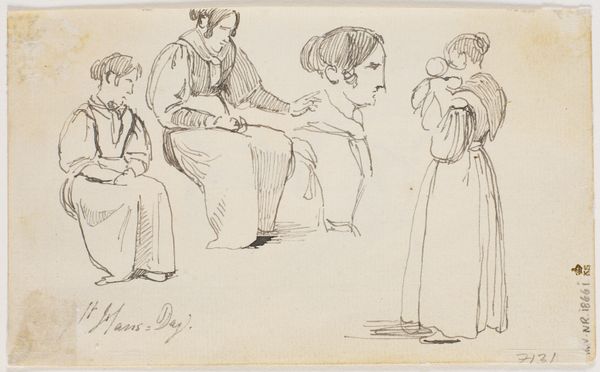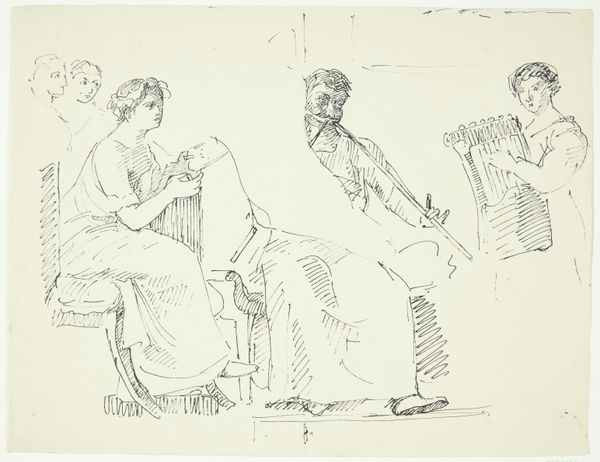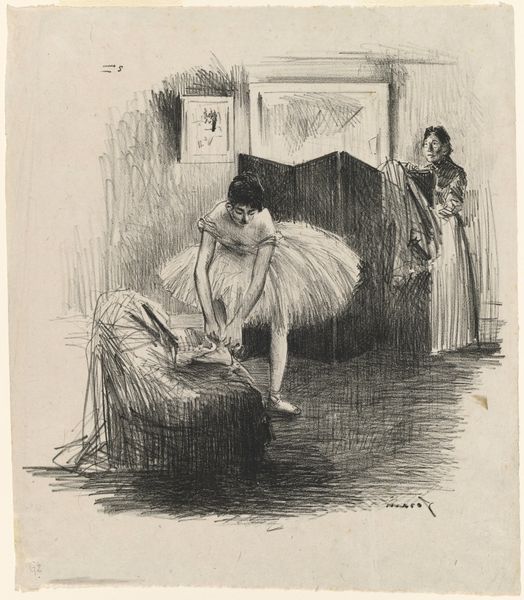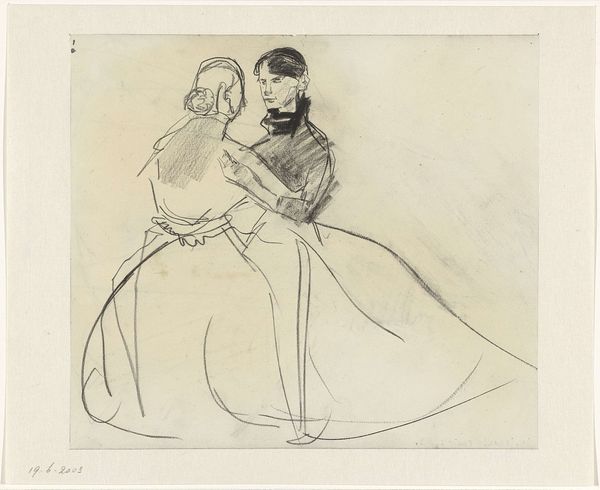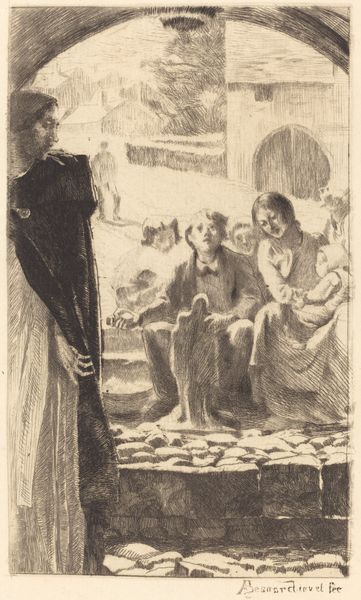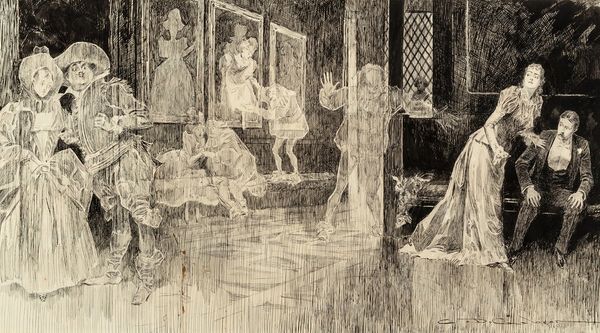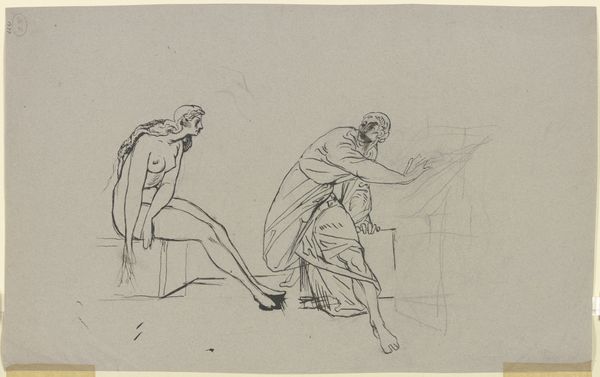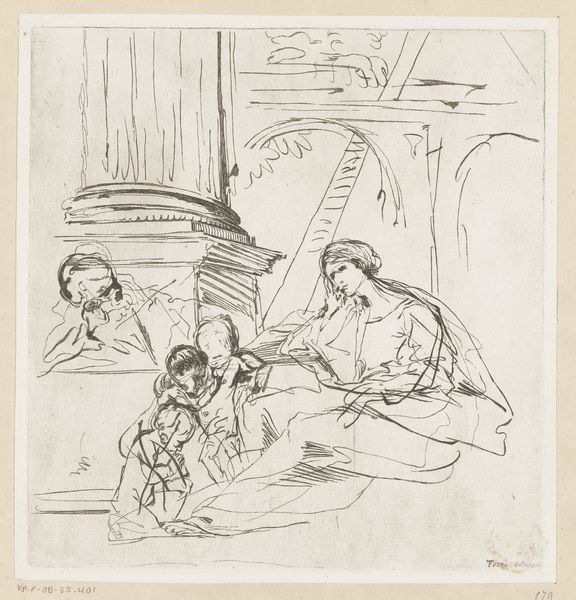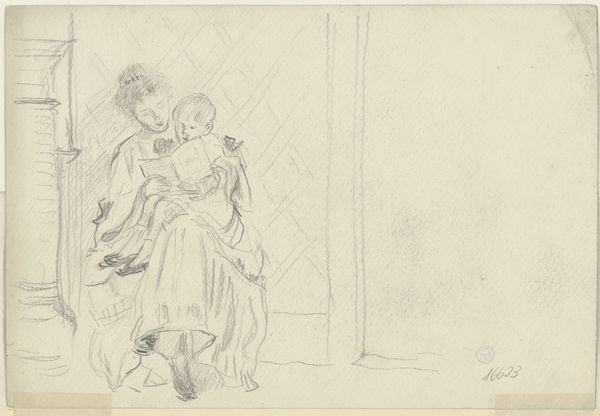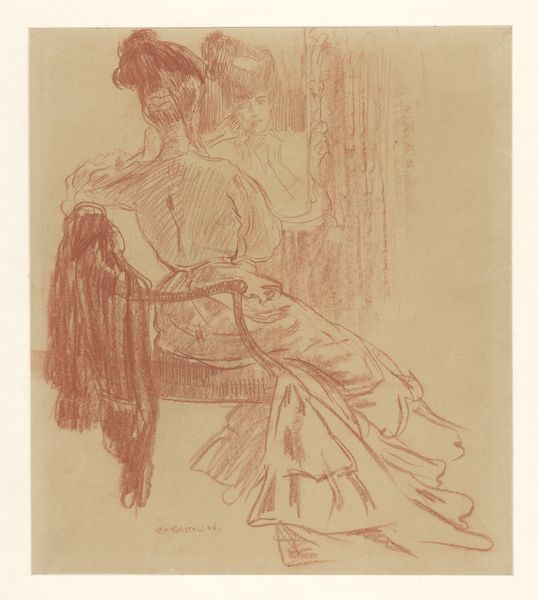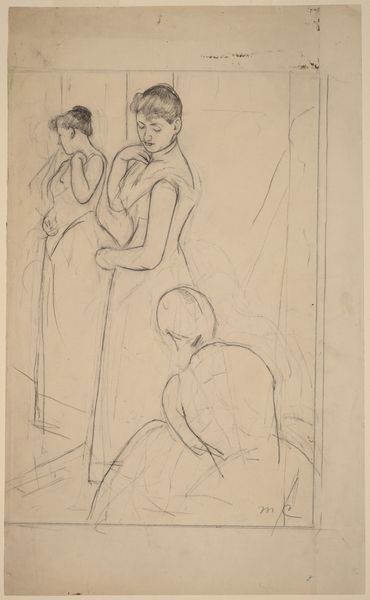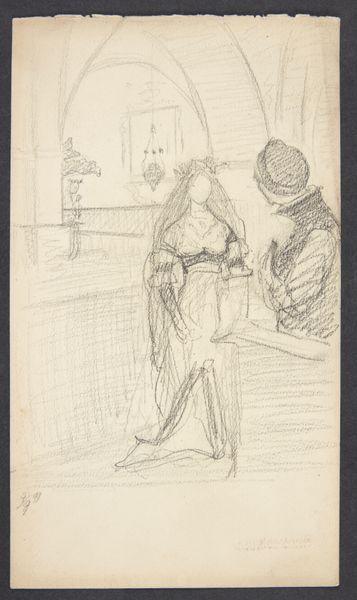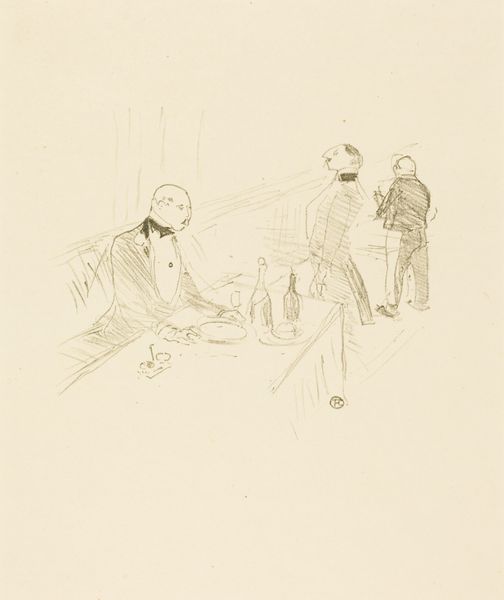
Copyright: National Gallery of Art: CC0 1.0
Editor: This is Honoré Daumier's lithograph from 1847, with the evocative title "Fesant toutes partie de la plus belle moitié...". It strikes me as a rather sardonic commentary on leisure. The composition, with its rigid figures contrasted against the fluid water, creates a strange sense of unease. What do you see in this piece from a formalist perspective? Curator: Precisely. Observe how Daumier employs stark contrasts and hatching to sculpt form and generate tonality. The linear quality of the printmaking lends itself to this graphic rendering, accentuating the almost grotesque features of the bathers. Note also the tension between the foreground figures and the shallow depth of field. The artist masterfully uses a limited range of values to create depth, yet the figures are undeniably flattened against the implied space, wouldn't you agree? Editor: Yes, the lack of traditional perspective is noticeable. It's like the figures are trapped on a stage, and the stark lighting only emphasizes their expressions, especially of the figure seated. What would you say about Daumier’s line quality here? Is it simply a byproduct of the medium or something more? Curator: Ah, but the line *is* the meaning! Daumier uses the lithographic line to critique. See how the bold outlines define the figures, almost like caricatures. The slightly awkward posture and exaggerated expressions underscore a particular social observation that could be explored through careful attention to Daumier’s arrangement of form and line alone. There's a deliberate distortion, a stretching of reality through formal means, to heighten the work's satirical impact. The artist wants you to see. Editor: I never considered line in this light. It's fascinating how much you can interpret through just the visual construction. Curator: Indeed, and in this case, perhaps an argument could be made about the reduction of humanity down to these simple elements; lines, tones, figures... Editor: That’s given me a whole new perspective on the work. Thank you for the explanation!
Comments
No comments
Be the first to comment and join the conversation on the ultimate creative platform.
